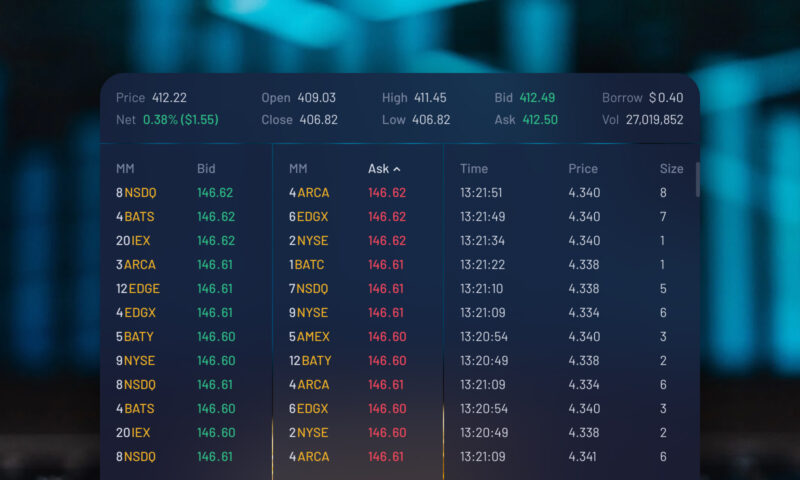Level 2 Order Books are essential tools for analyzing market depth and making better-informed trading decisions. A Level 2 Order Book displays the bid and ask prices for a financial instrument at different price levels, providing a deeper understanding of the market’s supply and demand. Implementing a Level 2 Order Book efficiently requires using advanced data structures, such as skip lists or AVL trees. This article will compare the two techniques, highlighting the advantages and disadvantages of each approach.
Skip Lists:
Skip lists are probabilistic data structures that allow for fast search, insertion, and deletion operations. They are composed of multiple linked lists, each containing a subset of elements from the previous list. The skip list’s structure enables efficient search operations in O(log n) time complexity, where ‘n’ represents the number of elements in the list.
Advantages of Skip Lists:
- Simplicity: Skip lists are relatively simple to implement compared to other data structures like AVL trees. Their code is generally more manageable and easier to understand, making them an attractive option for programmers.
- Fast Operations: Skip lists have logarithmic average-case performance for search, insert, and delete operations, which is crucial for maintaining an efficient Level 2 Order Book.
- Dynamic Scaling: Skip lists can dynamically adjust their size and structure, allowing them to easily adapt to changes in the market data volume. This feature is especially beneficial for handling Level 2 Order Books in fast-moving and high-frequency trading environments.
Disadvantages of Skip Lists:
- Space Overhead: Skip lists tend to have higher space overhead compared to other data structures like AVL trees, due to the extra pointers required for maintaining their structure.
- Worst-Case Performance: While skip lists perform well on average, their worst-case performance can be linear, potentially leading to performance bottlenecks in certain scenarios.
AVL Trees:
AVL trees are a type of self-balancing binary search tree that maintains the height difference between the left and right subtrees to be at most one. This balancing property ensures that the tree remains balanced after every insertion and deletion operation, providing logarithmic worst-case time complexity for search, insert, and delete operations.
Advantages of AVL Trees:
- Guaranteed Logarithmic Performance: AVL trees offer guaranteed O(log n) time complexity for search, insert, and delete operations, ensuring consistent performance even in the worst-case scenarios.
- Space Efficiency: AVL trees have a lower space overhead compared to skip lists, as they only require two pointers per node (left and right child).
- Widespread Adoption: AVL trees are a well-established data structure with extensive documentation and resources available, making them easier for programmers to learn and implement.
Disadvantages of AVL Trees:
- Complexity: AVL trees are more complex to implement compared to skip lists, which may result in more challenging code maintenance and debugging.
- Slower Insertion and Deletion: While AVL trees offer
Both data structures can be used effectively for Level 2 order books. However, skip lists may be more practical for fast insertion and deletion of limit orders, as well as being more scalable and suitable for distributed systems. AVL trees can be more suitable for large-scale order books, but their increased complexity may result in higher maintenance costs.
Conclusion:
In conclusion, both skip lists and AVL trees are viable options for implementing a Level 2 Order Book. The choice between the two data structures largely depends on the specific requirements and trade-offs for your application.
Skip lists are a better choice if you prefer a simpler implementation and can tolerate higher space overhead and potential worst-case performance bottlenecks. On the other hand, AVL trees are more suitable if you require guaranteed logarithmic performance for all operations and are willing to deal with the complexity of implementing a self-balancing binary search tree.
Ultimately, the decision comes down to a careful evaluation of the unique needs of your project and the trade-offs you’re willing to make in terms of performance, space overhead, and implementation complexity.
Ready to elevate your digital product launch? Contact itAdviser today for a FREE consultation and let our experts help you make a lasting impact! Click here.
